Tejas S. Prabhune
Articulatory Encodec: Vocal Tract Kinematics as a Codec for Speech
Jun 18, 2024
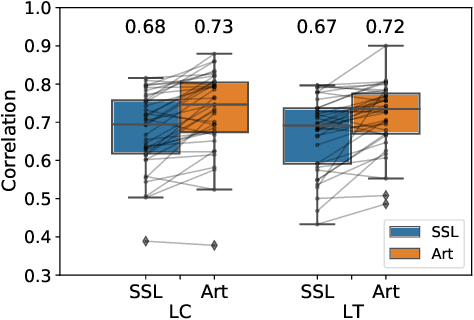
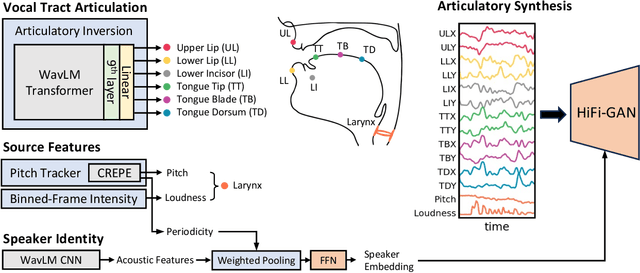
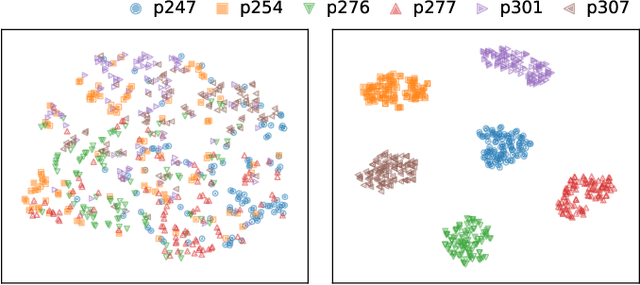
Abstract:Vocal tract articulation is a natural, grounded control space of speech production. The spatiotemporal coordination of articulators combined with the vocal source shapes intelligible speech sounds to enable effective spoken communication. Based on this physiological grounding of speech, we propose a new framework of neural encoding-decoding of speech -- articulatory encodec. The articulatory encodec comprises an articulatory analysis model that infers articulatory features from speech audio, and an articulatory synthesis model that synthesizes speech audio from articulatory features. The articulatory features are kinematic traces of vocal tract articulators and source features, which are intuitively interpretable and controllable, being the actual physical interface of speech production. An additional speaker identity encoder is jointly trained with the articulatory synthesizer to inform the voice texture of individual speakers. By training on large-scale speech data, we achieve a fully intelligible, high-quality articulatory synthesizer that generalizes to unseen speakers. Furthermore, the speaker embedding is effectively disentangled from articulations, which enables accent-perserving zero-shot voice conversion. To the best of our knowledge, this is the first demonstration of universal, high-performance articulatory inference and synthesis, suggesting the proposed framework as a powerful coding system of speech.
Towards Streaming Speech-to-Avatar Synthesis
Oct 25, 2023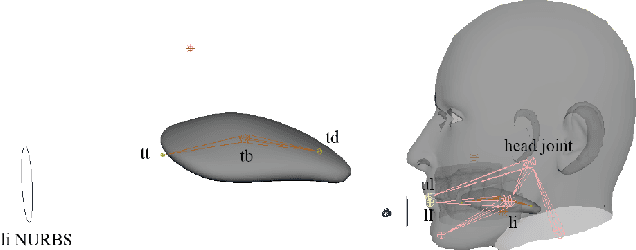
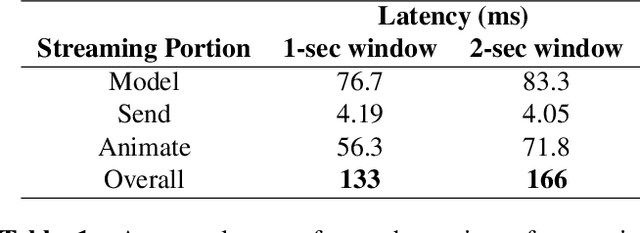
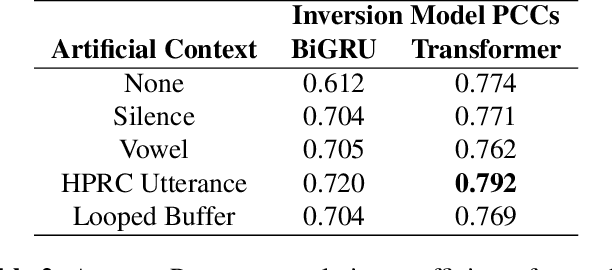

Abstract:Streaming speech-to-avatar synthesis creates real-time animations for a virtual character from audio data. Accurate avatar representations of speech are important for the visualization of sound in linguistics, phonetics, and phonology, visual feedback to assist second language acquisition, and virtual embodiment for paralyzed patients. Previous works have highlighted the capability of deep articulatory inversion to perform high-quality avatar animation using electromagnetic articulography (EMA) features. However, these models focus on offline avatar synthesis with recordings rather than real-time audio, which is necessary for live avatar visualization or embodiment. To address this issue, we propose a method using articulatory inversion for streaming high quality facial and inner-mouth avatar animation from real-time audio. Our approach achieves 130ms average streaming latency for every 0.1 seconds of audio with a 0.792 correlation with ground truth articulations. Finally, we show generated mouth and tongue animations to demonstrate the efficacy of our methodology.
 Add to Chrome
Add to Chrome Add to Firefox
Add to Firefox Add to Edge
Add to Edge